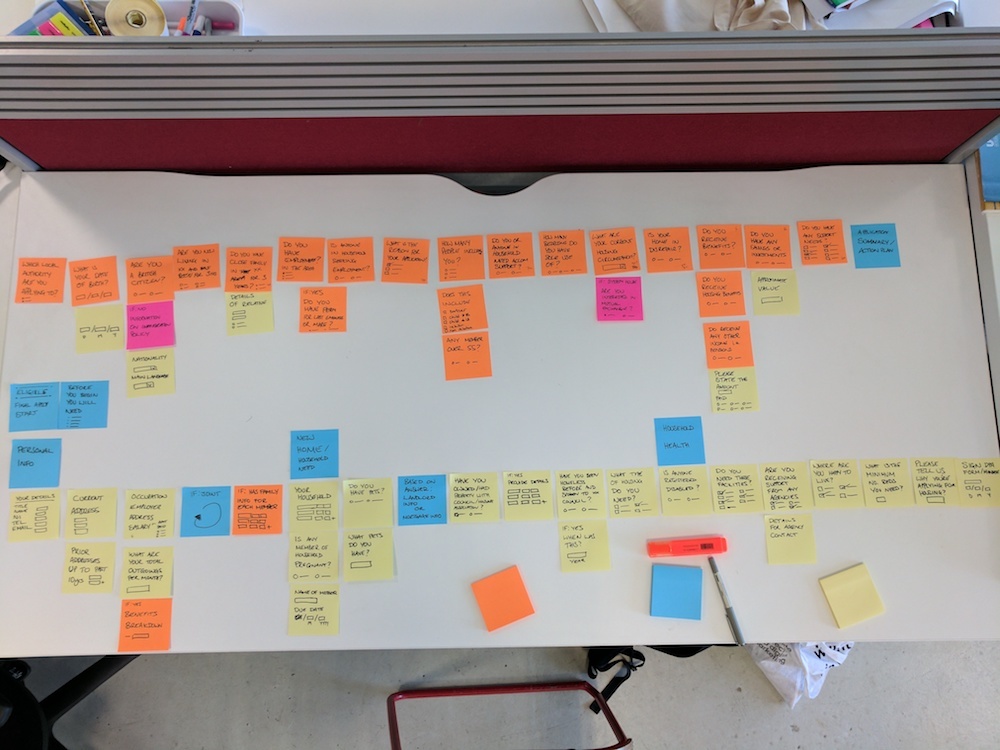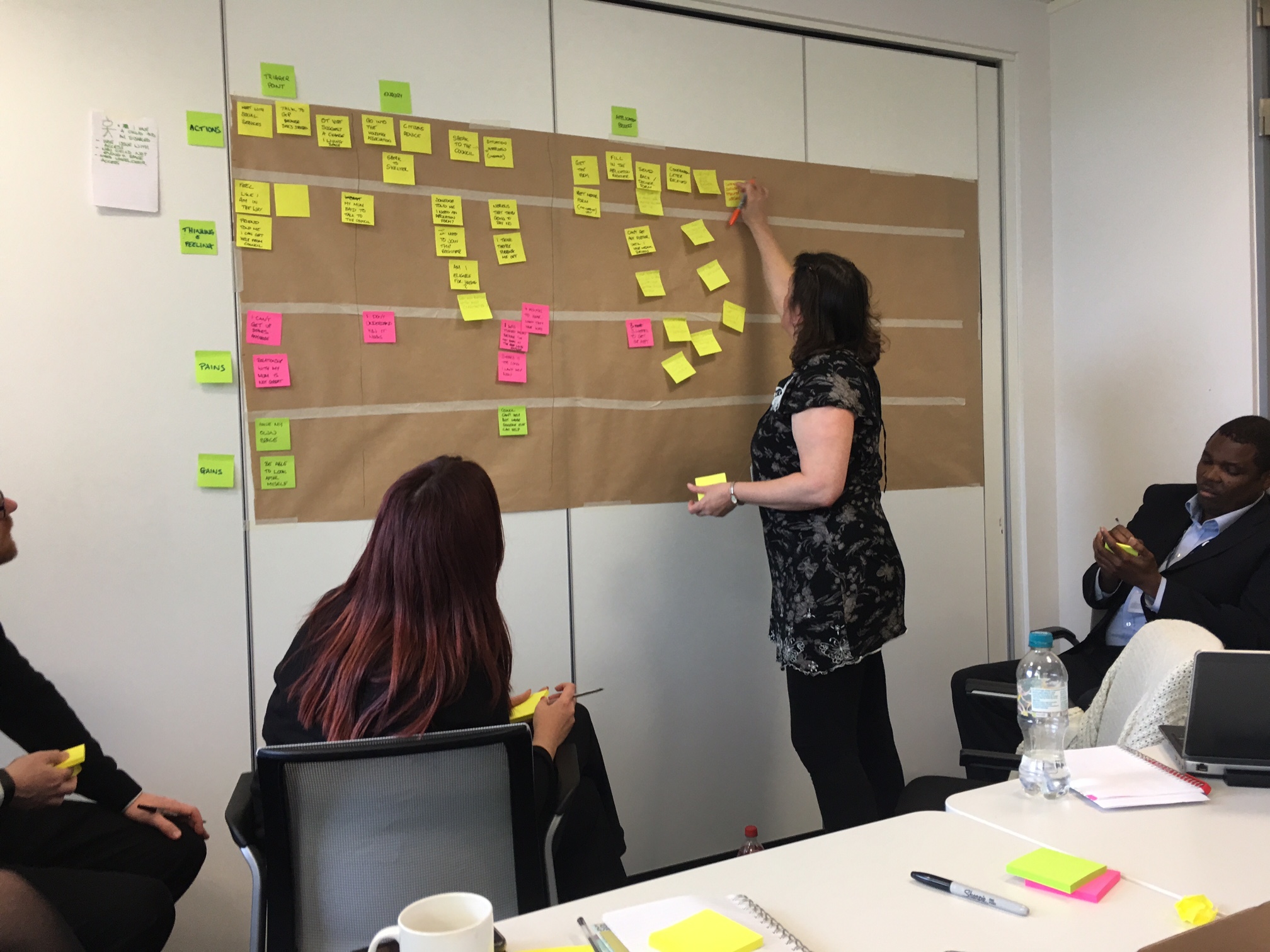High Impact - Low Effort
The housing solutions team were experiencing difficulty in processing an extensive backlog of applications to the housing register that could leave people at risk, or worse homeless.
With all applications still being paper-based, it required a lot of time to process for eligibility and to assess on an applicants options.
They wanted to use a design sprint approach to review the service, find an opportunity to design, prototype and launch in 10 days.
Getting to know your customer
We wanted the project to involve front-door staff, application officers and the emerging digital team so that we could make fast decisions, design and build in the open and get to a prototype stage by the last day, ready to test with service users who had been recruited through a local outreach programme.
We kicked off the week with an experience mapping workshop attended by the entire project group consisting of 14 people, including service managers, developers, compliance officers and delivery managers.
The resulting artefact gave us a rounded understanding of the needs an individual has when approaching the service along with a lot of assumption of their perception of what they have a right to.
Taking the group into a broad discussion about the service starting before a person has engaged with the council right through to moving into permanent accommodation humbled the room. People had to do a lot of work to get to where they needed to be, and we believed they felt like they had to fight to get there.
Critical points were detected quickly where we could alleviate tensions, confusion and unnecessarily long wait times for information.
The real problem often happens before you know about it
When we start talking about the need established by the organisation we often discover the need for the service user is entirely different.
It’s the strength of customer experience mapping. It gives you a visual on what’s going on and quickly spot choke points in the service.
We identified that there was a large amount of service support required at a particular stage after applications have been made. This was happening due to a failure to set expectation and explain the service at the first point of contact. People simply didn’t understand what eligibility meant, or what the housing process is.
Now we had a clear area to focus on that would alleviate a critical choke point later on in the process. Time to get sharpies out!

We finished our sprint by spending an afternoon at a homeless outreach centre where a number of people gave their time to us for going through the eligibility checker for usability testing.
This provided an additional benefit of giving the team the chance to speak to customers about their experiences with the service, that helped us further plan for what we would need to release in relation to the tool.
Learn by releasing a pilot
Once live, a comm’s piece was gradually rolled out to local partners to inform them of the supporting service for checking eligibility and updated information on how the service works.
The system had good uptake, immediately improving the accuracy and quality of applications to the housing register.
For anyone not eligible for housing, the eligibility checker provided information and guidance for alternative services and options available to them.
It has enabled the team to catch up on existing application processing and evaluate how other areas of the service can be improved through small iterations, such as information provided through the council website and a plan to revisit the physical application process based on our findings to improve its flow.
